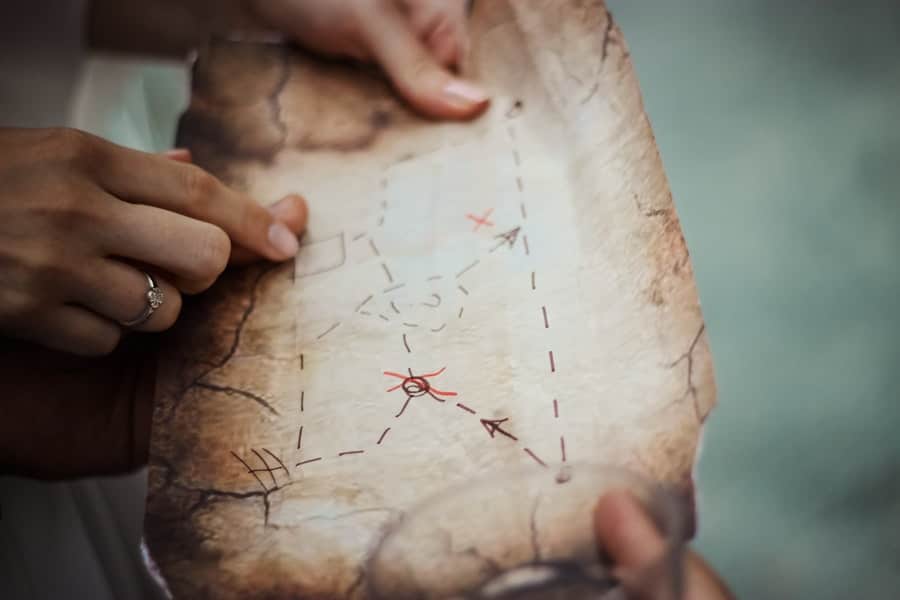Augmented Reality (AR) has emerged as a transformative technology that overlays digital information onto the physical world, creating an interactive experience that enhances our perception of reality. This innovative medium has found a unique niche in urban exploration, where it bridges the gap between the digital and the tangible, allowing users to engage with their surroundings in novel ways.
By integrating digital elements into real-world environments, AR not only enriches the exploration experience but also encourages individuals to venture beyond their usual paths. The intersection of AR and urban exploration is particularly compelling in today’s fast-paced, technology-driven society. As urban areas become increasingly dense and complex, the need for innovative ways to engage with these environments grows.
AR applications can provide context, historical information, and interactive elements that transform mundane cityscapes into vibrant, informative experiences. For instance, a simple walk through a city can be enhanced by an AR application that reveals the history of a building or highlights local art installations, making the exploration both educational and entertaining. This fusion of technology and exploration invites users to rediscover their cities, fostering a deeper connection to their surroundings.
Key Takeaways
- Augmented reality (AR) enhances urban exploration by overlaying digital information onto the physical environment, creating an immersive experience.
- Gamifying urban exploration with AR encourages physical activity, social interaction, and community building while making the experience more engaging and enjoyable.
- AR enhances the gaming experience in urban exploration by adding interactive elements, challenges, and rewards, making the exploration more dynamic and entertaining.
- AR technology encourages physical activity and exploration by motivating users to move around and discover new locations in the city.
- Popular AR games for urban exploration, such as Pokémon Go and Ingress, have demonstrated the potential of AR in creating engaging and interactive experiences in real-world environments.
The Benefits of Gamifying Urban Exploration with Augmented Reality
Increased Engagement and Immersion
By incorporating challenges, rewards, and interactive tasks into the exploration process, users are more likely to immerse themselves in their surroundings. For example, an AR app might encourage users to find specific landmarks or complete tasks at various locations, turning a simple walk into an adventurous quest.
Fostering a Sense of Achievement and Progression
Users can earn points, badges, or other rewards for completing challenges or discovering new locations. This not only motivates individuals to explore more but also creates a sense of community among participants who share their achievements and experiences.
Stepping Out of Comfort Zones
This dynamic encourages people to step outside their comfort zones and engage with their environment in ways they might not have considered otherwise.
How Augmented Reality Enhances the Gaming Experience in Urban Exploration
The integration of augmented reality into urban exploration games significantly enhances the gaming experience by providing immersive and interactive elements that traditional gaming cannot offer. One of the most notable enhancements is the ability to blend real-world environments with digital content seamlessly. For instance, players might encounter virtual characters or objects that appear in their actual surroundings through their mobile devices.
This creates a unique layer of interaction where players must navigate both the physical and digital worlds simultaneously, leading to a more engaging and dynamic experience. Additionally, AR can provide contextual information that enriches gameplay. Imagine exploring a historic district where players can point their devices at buildings to unlock stories about their past or view historical photographs overlaid on the current landscape.
This not only adds depth to the gaming experience but also educates players about their environment in an entertaining manner. The use of AR can transform mundane locations into interactive storytelling platforms, where every corner holds potential surprises and discoveries. This blend of education and entertainment is particularly appealing in urban settings, where history and modernity coexist.
The Role of Augmented Reality in Encouraging Physical Activity and Exploration
One of the significant advantages of incorporating augmented reality into urban exploration is its ability to promote physical activity. In an age where sedentary lifestyles are increasingly common due to technology and urban living conditions, AR games encourage users to get outside and move. By designing experiences that require players to walk, run, or cycle through various locations, these applications motivate individuals to engage in physical activity while exploring their cities.
For example, an AR scavenger hunt might require players to visit multiple sites across a city, prompting them to cover significant distances while searching for virtual clues. Furthermore, this active engagement with the environment can lead to improved mental well-being. Physical activity is known to release endorphins, which can enhance mood and reduce stress levels.
When combined with the excitement of discovery and adventure that AR provides, users are likely to experience a boost in overall happiness and satisfaction. The act of exploring new areas can also foster curiosity and a sense of adventure, encouraging individuals to break free from their daily routines and discover hidden treasures within their urban landscapes.
Examples of Popular Augmented Reality Games for Urban Exploration
Several augmented reality games have successfully integrated urban exploration into their gameplay mechanics, providing users with unique experiences that highlight the potential of this technology. One prominent example is Pokémon GO, which took the world by storm upon its release in 2016. Players are tasked with finding and capturing virtual Pokémon that appear in real-world locations.
The game encourages users to explore parks, streets, and landmarks while engaging with other players in their communities. Its success lies not only in its nostalgic appeal but also in its ability to motivate players to walk significant distances while discovering new areas. Another noteworthy example is Ingress, developed by Niantic before Pokémon GO.
Ingress transforms real-world locations into portals that players must capture for their respective factions. The game encourages teamwork and strategy as players collaborate to control territories across cities worldwide. By requiring players to physically visit these portals, Ingress promotes urban exploration while fostering social interaction among participants.
These games exemplify how augmented reality can create engaging experiences that encourage users to explore their environments actively.
The Impact of Augmented Reality on Social Interaction and Community Building
Augmented reality games have a profound impact on social interaction and community building within urban environments. As players engage with these applications, they often find themselves connecting with others who share similar interests in exploration and gaming. This shared experience fosters camaraderie among participants as they collaborate on challenges or compete for high scores.
For instance, many AR games feature team-based challenges that require players to work together to achieve common goals, thereby strengthening social bonds. Moreover, these games often lead to the formation of local communities centered around shared interests in urban exploration and gaming. Players may organize meetups or events where they can connect in person, share tips about gameplay strategies, or explore new areas together.
This sense of community not only enhances the gaming experience but also contributes positively to local culture by encouraging residents to engage with their neighborhoods actively. As players discover hidden gems within their cities together, they develop a deeper appreciation for their surroundings and foster a sense of belonging within their communities.
Challenges and Limitations of Augmented Reality Gamification in Urban Exploration
Despite its many benefits, gamifying urban exploration through augmented reality does come with challenges and limitations that must be addressed for optimal user experiences. One significant concern is the issue of accessibility; not everyone has access to smartphones or high-speed internet connections necessary for AR applications. This digital divide can exclude certain demographics from participating in these experiences, limiting the potential reach of AR games designed for urban exploration.
Additionally, there are concerns regarding privacy and safety when using AR applications in public spaces. Users may inadvertently trespass on private property or become distracted while navigating unfamiliar environments, leading to potential accidents or conflicts with local residents. Developers must consider these factors when designing AR experiences to ensure they promote safe exploration while respecting community boundaries.
Furthermore, there is always the risk of over-reliance on technology; as users become more engrossed in digital overlays, they may overlook the beauty and significance of their physical surroundings.
The Future of Augmented Reality in Gamifying Urban Exploration
Looking ahead, the future of augmented reality in gamifying urban exploration appears promising as technology continues to evolve rapidly. Advancements in AR hardware—such as smart glasses—could further enhance user experiences by providing hands-free interaction with digital content while exploring urban environments. This would allow users to engage more fully with their surroundings without being tethered to handheld devices.
Moreover, as cities become smarter through the integration of IoT (Internet of Things) technologies, AR applications could leverage real-time data to create even more immersive experiences tailored to individual users’ preferences and behaviors. For instance, personalized recommendations for nearby attractions or events could be delivered based on user interests or previous activities within the app. Such innovations could revolutionize how people explore cities by making each experience unique and tailored specifically for them.
In conclusion, augmented reality has immense potential to transform urban exploration into an engaging and interactive experience that promotes physical activity, social interaction, and community building while also presenting challenges that need careful consideration as this technology continues to develop.
If you’re interested in the latest consumer technology breakthroughs, you should check out CNET’s coverage on the topic. They provide in-depth analysis and reviews on a wide range of tech products, including tablets for kids. Just like how augmented reality gamifies urban exploration for gamers, CNET offers valuable insights into how technology is shaping our everyday lives.
FAQs
What is augmented reality (AR)?
Augmented reality (AR) is a technology that superimposes digital information such as images, videos, or 3D models onto the real world, typically viewed through a smartphone or AR glasses.
What is urban exploration?
Urban exploration is the act of exploring and discovering the hidden or lesser-known parts of cities, such as abandoned buildings, underground tunnels, and historical sites.
How does augmented reality gamify urban exploration for gamers?
Augmented reality gamifies urban exploration for gamers by overlaying game elements, such as virtual characters, items, and challenges, onto the real-world urban environment. This allows gamers to engage in interactive and immersive experiences while exploring the city.
What are the benefits of using augmented reality for urban exploration?
Using augmented reality for urban exploration enhances the gaming experience by adding a layer of interactivity and immersion to the real-world environment. It also encourages gamers to explore and appreciate the hidden gems of a city while having fun.
What are some examples of augmented reality games that gamify urban exploration?
Examples of augmented reality games that gamify urban exploration include Pokémon Go, Ingress, and Harry Potter: Wizards Unite. These games encourage players to explore their surroundings and interact with virtual elements placed in real-world locations.



